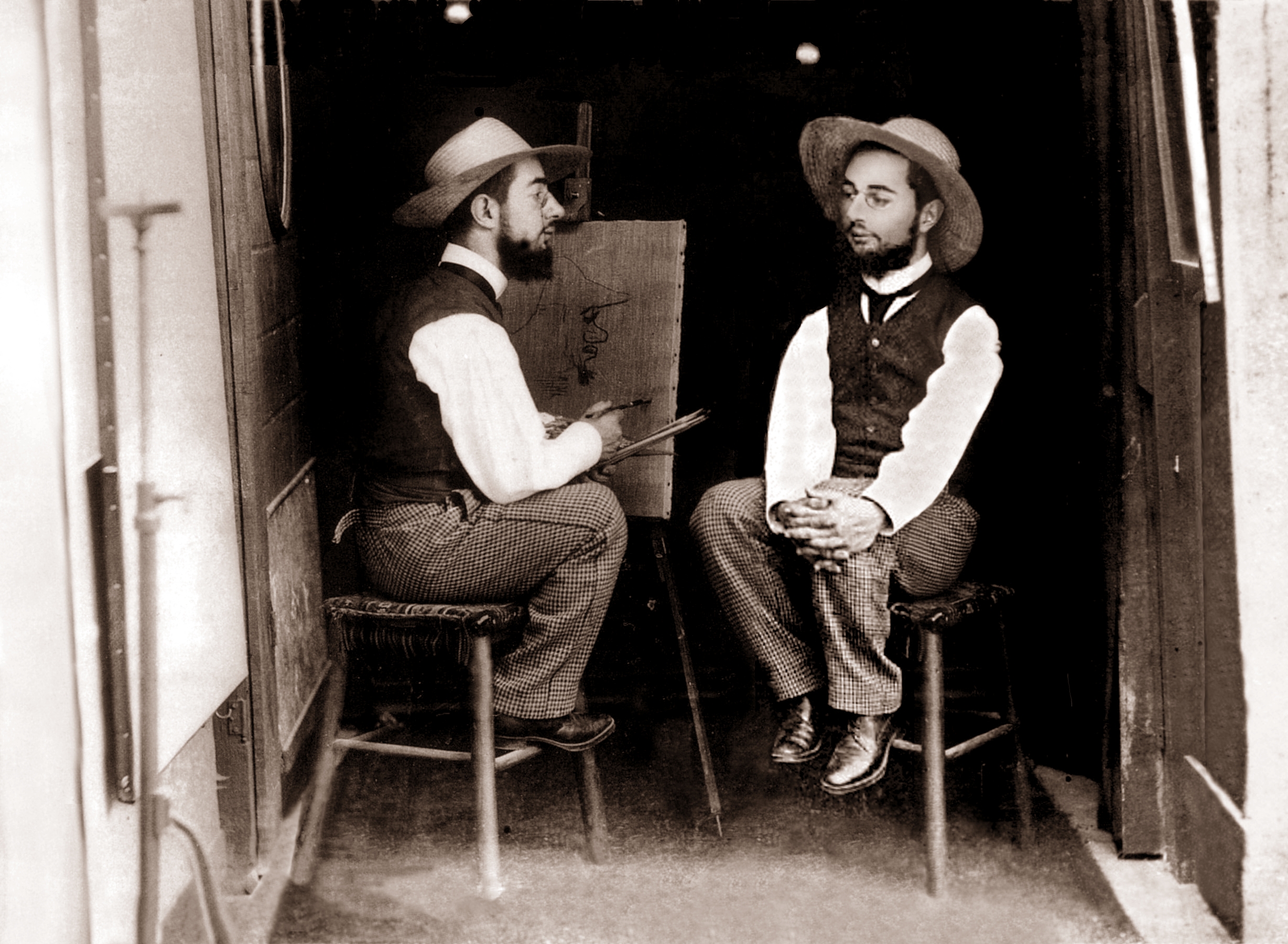|
Maurice Guibert
Maurice Guibert (12 August 1856 – 13 January 1922) was a French photographer best known today as a friend of Henri de Toulouse-Lautrec. He was an agent for the champagne company Moët and Chandon and a member of the Société française de photographie. Little else is known of him other than his self-portraits and photos of Toulouse-Lautrec that often led to collaborations such as in the painting ''À La Mie'': File:Lautrec A la mie foto.jpg File:Henri de Toulouse-Lautrec 001.jpg External links Maurice Guibertin the RKD The Netherlands Institute for Art History or RKD (Dutch: RKD-Nederlands Instituut voor Kunstgeschiedenis), previously Rijksbureau voor Kunsthistorische Documentatie (RKD), is located in The Hague and is home to the largest art history center i ... 1856 births 1913 deaths 19th-century French photographers 20th-century French photographers {{France-photographer-stub ... [...More Info...] [...Related Items...] OR: [Wikipedia] [Google] [Baidu] |
Henri De Toulouse-Lautrec
Comte Henri Marie Raymond de Toulouse-Lautrec-Monfa (24 November 1864 – 9 September 1901) was a French painter, printmaker, draughtsman, caricaturist and illustrator whose immersion in the colourful and theatrical life of Paris in the late 19th century allowed him to produce a collection of enticing, elegant, and provocative images of the sometimes decadent affairs of those times. Born into the aristocracy, Toulouse-Lautrec broke both his legs around the time of his adolescence and, due to the rare condition Pycnodysostosis, was very short as an adult due to his undersized legs. In addition to his alcoholism, he developed an affinity for brothels and prostitutes that directed the subject matter for many of his works recording many details of the late-19th-century bohemian lifestyle in Paris. Toulouse-Lautrec is among the painters described as being Post-Impressionists, with Paul Cézanne, Vincent van Gogh, Paul Gauguin, and Georges Seurat also commonly considered as ... [...More Info...] [...Related Items...] OR: [Wikipedia] [Google] [Baidu] |
Société Française De Photographie
The Société française de photographie (SFP) is an association, founded on 15 November 1854, devoted to the history of photography. It has a large collection of photographs and old cameras. Among the founding members were Olympe Aguado, Hippolyte Bayard, Alexandre Edmond Becquerel, Eugène Durieu, Edmond Fierlants, Jean-Baptiste Louis Gros, Gustave Le Gray and Henri Victor Regnault. Henri Victor Regnault was the first president. History The Société française de photographie, founded on 15 November 1854, was based on the short-lived Société héliographique (1851) but differed in that it was less elitist and more forward-looking. Some accounts mistakenly link the two organizations more closely, referring simply to a change in the name with a view to giving the SFP the status of the world's oldest photography organization. A careful analysis of the Société héliographique describes in detail how the initial enthusiasm for the organization quickly disappeared resulting in the ... [...More Info...] [...Related Items...] OR: [Wikipedia] [Google] [Baidu] |
1856 Births
Events January–March * January 8 – Borax deposits are discovered in large quantities by John Veatch in California. * January 23 – American paddle steamer SS ''Pacific'' leaves Liverpool (England) for a transatlantic voyage on which she will be lost with all 186 on board. * January 24 – U.S. President Franklin Pierce declares the new Free-State Topeka government in "Bleeding Kansas" to be in rebellion. * January 26 – First Battle of Seattle: Marines from the suppress an indigenous uprising, in response to Governor Stevens' declaration of a "war of extermination" on Native communities. * January 29 ** The 223-mile North Carolina Railroad is completed from Goldsboro through Raleigh and Salisbury to Charlotte. ** Queen Victoria institutes the Victoria Cross as a British military decoration. * February ** The Tintic War breaks out in Utah. ** The National Dress Reform Association is founded in the United States to promote "rational" dress for ... [...More Info...] [...Related Items...] OR: [Wikipedia] [Google] [Baidu] |
1913 Deaths
Events January * January 5 – First Balkan War: Battle of Lemnos – Greek admiral Pavlos Kountouriotis forces the Turkish fleet to retreat to its base within the Dardanelles, from which it will not venture for the rest of the war. * January 13 – Edward Carson founds the (first) Ulster Volunteer Force, by unifying several existing loyalist militias to resist home rule for Ireland. * January 23 – 1913 Ottoman coup d'état: Ismail Enver comes to power. * January – Stalin (whose first article using this name is published this month) travels to Vienna to carry out research. Until he leaves on February 16 the city is home simultaneously to him, Hitler, Trotsky and Tito alongside Berg, Freud and Jung and Ludwig and Paul Wittgenstein. February * February 1 – New York City's Grand Central Terminal, having been rebuilt, reopens as the world's largest railroad station. * February 3 – The 16th Amendment to the United States Cons ... [...More Info...] [...Related Items...] OR: [Wikipedia] [Google] [Baidu] |
19th-century French Photographers
The 19th (nineteenth) century began on 1 January 1801 ( MDCCCI), and ended on 31 December 1900 ( MCM). The 19th century was the ninth century of the 2nd millennium. The 19th century was characterized by vast social upheaval. Slavery was abolished in much of Europe and the Americas. The First Industrial Revolution, though it began in the late 18th century, expanding beyond its British homeland for the first time during this century, particularly remaking the economies and societies of the Low Countries, the Rhineland, Northern Italy, and the Northeastern United States. A few decades later, the Second Industrial Revolution led to ever more massive urbanization and much higher levels of productivity, profit, and prosperity, a pattern that continued into the 20th century. The Islamic gunpowder empires fell into decline and European imperialism brought much of South Asia, Southeast Asia, and almost all of Africa under colonial rule. It was also marked by the collapse of the large ... [...More Info...] [...Related Items...] OR: [Wikipedia] [Google] [Baidu] |




